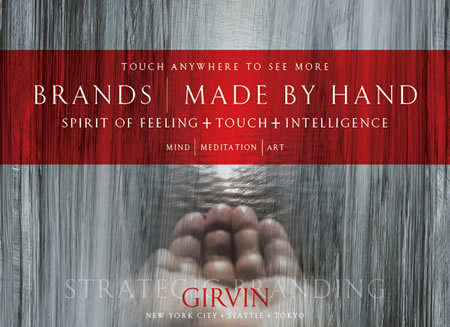
Examining the principle of integrated marketing, experience design, and the semblance of the sentient.
I’d start with this poetic assemblage.
Memories reach back. They are the string from the now, to the then. They link where we are, what we are, to what we’ve been, and where we’ve been — and how all of these entanglements string together. And some might suggest that what is found in the present is less than happier than what one might recall in the past. As I’ve referenced, David Byrne, for one, thinks so. Every brand will be about memory — that is, it’s the framing of brand resonance that either builds a sense of personal connection, or fails to link and is soon forgotten. The notion of the mimetic bridge, between happiness states and recollection, and the relationship to present evaluations of product experience are understood.
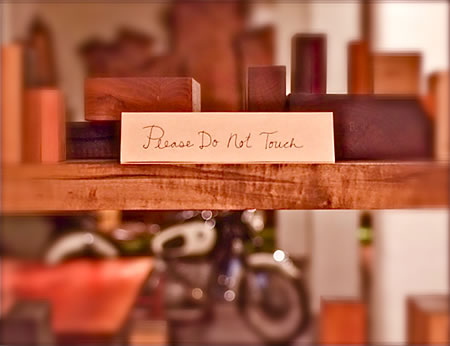
In speaking about the construct of how brands are made, the inverted expression is often true; it’s not so much how they are made, but how they are experienced. Experiencing, really, is about sense. The notion of the touchpoint is an often-bantered (and battered) phrasing, but really — in that use — what is the referrer really speaking of? Touching things, curiously, is not a common “activity” among many levels of experiencer.

In doing some work, and some writing, on the conception of the Apple stores, and stories, over time, I am continuously surprised by how few people actually “touch” things. As people might age, in that maturing, there’s an idea that “we know what that feels like”, therefore, why “feel” it? Given the promotion of anti-bacterials, etc., is it possible that there’s a hands-off attitude about touching things? Touch might be vector-based; it might be dirty? Infectious? Not for all, surely — those that wander and wonder about the world touch regularly — and in seeing something new, simply connect, to sense more enthusiastically. Perhaps you are one of these people?
I like to touch everything. And to that end, I’m very curious about the actual idea of brands that are designed to be felt – they are created to be touched and expressed in the context of sentient connection — the connection, the nexus — of the senses. With the jawing about the notions of experience design and integrated branding, I believe that there is inherently a requisite understanding of how things are touched, felt, sensed, browsed, scented, scene|seen, heard and tasted that can evoke these principles of patterning in the vessel of memory and “psychic” holding.
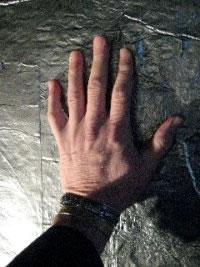
What I believe is that the actual theatre of experience design in the construct of touch and holistic feeling is mostly babble, and less about truly applied theory in examining how people sense things. Bear in mind, of course, that such an implied blanket statement is extraordinarily insulting to the many that do consider the notion of place-making as being inherently about sensate portals of expression — processions in guided sense storytelling — that lends itself to striking and unforgettable experience. The allegories on that front might be anything from entertainment, gamed digital environments, rides to spas and restaurants; and we’ve talked about — and continue to explore — these applications.
I had a girlfriend that was a social worker, therapist and psychologist (and for that matter, under analyses by a famous psychiatrist — long before my involvement with her — by the way) and she and I’d bounced around the idea of the vessel of memory and “experiencement” as a kind of psychic holding place — literally, a place in mind and imagining — that gathered experiences, history, consciousness and perhaps even stirring the pot of deeper unconscious connections. That idea of linking brand and psychic place has been deeply addressed by some, and gesturally explored by me — in Girvin legacy brand psyche work — in earlier blogs.
But, to the ideation of touching — and the synaesthetic outcomes in experience — layering and mixing interpretation and synthesis of the “sensing” of things, it’s more to how this is made, than the experience alone. To that, I ponder the handmade — the touch of the humane — in making the place of recollection, beauty, imperfection and naturalized wonderment.
What about that idea, of a brand being better, since it’s handmade — or that it evinces these feelings — touched by human dimensionality? And really, what could that possibly mean, a handmade brand? I’ve got a point of view. One that is carefully manifested, one that is built with crafted attention, one that shows something of a spirit of representing humanity, but not to the degree of slavish, faked treatment…The truth tells, and it is, indeed, about the search for the real — an element, one might say, is missing in our lives, explorations and quests for something meaning full.
I talked to some friends about it — one, the former product innovation guru of Target, and friend, Trending matrix, Robyn Waters. Her consulting focuses on global trend analyses, as well as writing books and speaking on her observations, a member of The 33 and theories of the tides that turn…
She’s got a point of view, a sequence of considerations, that relate to the idea that actually there might be a trend along these lines — a reach to the hand, the authentic, the real. Her take, comes out, as a trend, scene seen:
“I think more people than ever before (at least in my circle of friends and acquaintances) are making and giving handmade gifts.” A mere movement, keeping busy, or more? “Yes, it’s a trend. But more than that, it’s a reconnection with what’s important, and what’s really ‘real.’ I think that the more immersed we become in technology (the invisible wizard) the more there is an innate human longing for the tactile, the hands-on hand-made.”
She goes on, exploring more to the notion of a garland of hand-made provenance: “knitting….the infinity scarf is the hot item this year. It’s an endless loop (a mobius, actually, with all that implies about infinity) that you wear around the neck like a cowl…you can loop it several times.”
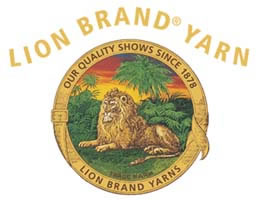
Expanding on that theme, the thread of hands touching, exploring, something nearly meditational: “Lion Brand Yarns has a WONDERFUL new studio in New York dedicated to helping people knit….the art and the skill. They like to think of knitting as the new ‘yoga.’ Mind, Body, Spirit. (You use your mind and your hands to make something for your body, and the doing of it by hand is like a moving meditation.)” She moves on, Nanny’s home, hand-made peanut brittle — and the stories that enwrap the product; and about Jamie Oliver —
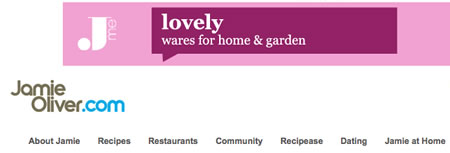
and his new line of Jme — people talking about a “kitchen feeling” and not a “push-the-button” factory. But it’s, too, about even “mass produced” products are seeing the spin of hand-made — labeling, kilner jars, hand-written — “simple, childish, bold, clearly unique.”
The concept of the hand made, the touch of the hand, in brand is about nurture, nourishment, delicacy, application, patience, care. Perhaps the idea of the hand is more, even to the allegorical phrasing — something to be touched, held, embraced — it’s not just the idea of the hand; it’s the idea of human. That human brand concept, so oft explored (by us) is that reach to consider the bridge between the humanness, the warmth of the living, and finally — that warmth spilling to the content, brand, object, beauty, profundity — and what can’t be forgotten.
Being real, coming back to real. It’s real. EuroMonitor, the trend group, suggests that the trending indications for 2009 — and now, beyond, fit into this repositioning of the recalling of simpler, more direct — non-digital times — less to buddies, and more to real friends; less to Facebook(ers) and more being live, real, with authentic relationships. The EuroMonitor team intimates “a degree of “unplugging” is predicted too, as many consumers relinquish digital acquaintances for more human contact, reclaiming personal or family time.” There is promotional resonance to this positioning — “eye-catching ads from Dentyne chewing gum play upon this unplugging trend. For instance: “chatroom full” features a photo of happy youths and then the strap line: “minimise buddy list, maximise buddies. Make face time.” The authentic connection, the well, careful, and perhaps “hand-made” extends this conception of “a lasting interest in the authentic and the enduring in consumption, which is craved by consumers to give them a sense of safety and control in uncertain times.” These analyses lend themselves to precise prototyping of relationship demographics, like “Imbys (in my back yard) will continue to be vocal proponents of buying from small businesses, handmade items and importantly, local and national products. This quest can be met by a myriad of products and services from comfort foods, to retro themes to holidays etc.”
The notion of the holiday positioning is one thing, to another insight, it’s a farther cultural insertion. The evidences are in play, of course to a certain audience set — others surely won’t even care, beyond the notion of price / object / relationships — but there is that picture.
I’d never discount the advent of the digital world, but even there, the conceptions of hand modeling in play is surely comprehensible — the touch of work that is characteristics by that kind of attention, by hand, with mind and meditation.
I go there. I live there. We take our clients there.
tsg
….
GIRVIN | seattle + nyc + tokyo
brand explorations / innovation / hand+mind
the reels: http://www.youtube.com/user/GIRVIN888
girvin blogs:
http://blog.girvin.com/
https://tim.girvin.com/index.php
girvin profiles and communities:
TED: http://www.ted.com/index.php/profiles/view/id/825
Behance: http://www.behance.net/GIRVIN-Branding
Flickr: http://www.flickr.com/photos/tgirvin/
Google: http://www.google.com/profiles/timgirvin
LinkedIn: http://www.linkedin.com/in/timgirvin
Facebook: http://www.facebook.com/people/Tim-Girvin/644114347
Twitter: http://twitter.com/tgirvin
c. 206.890.0621 | girvin@girvin.com
New York City + Seattle | Tokyo